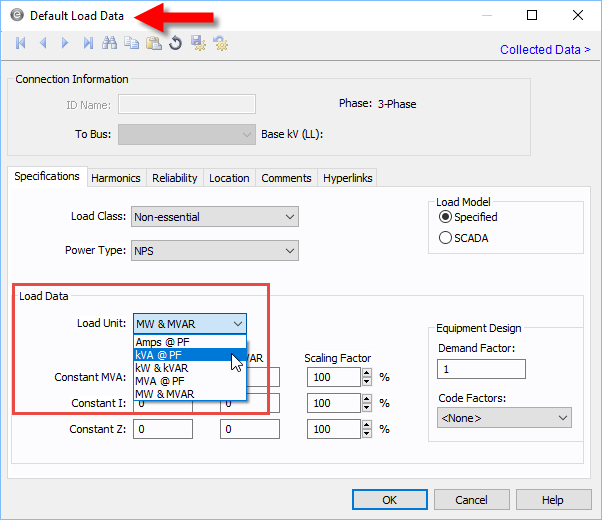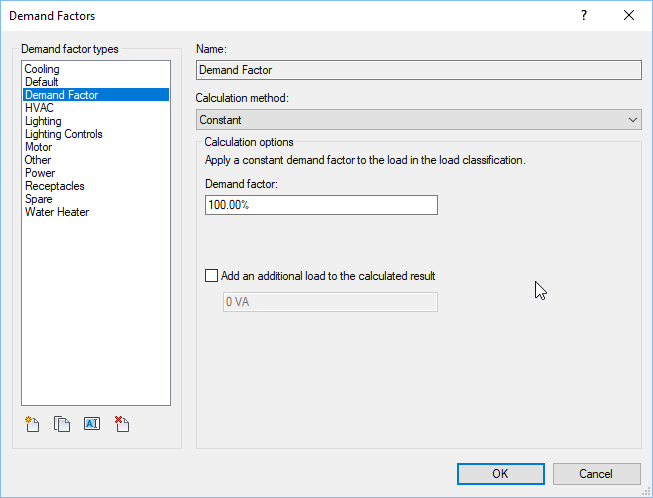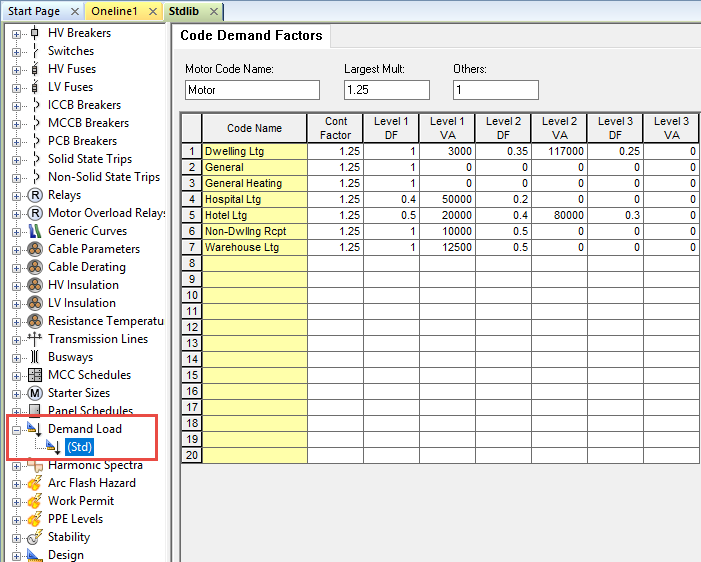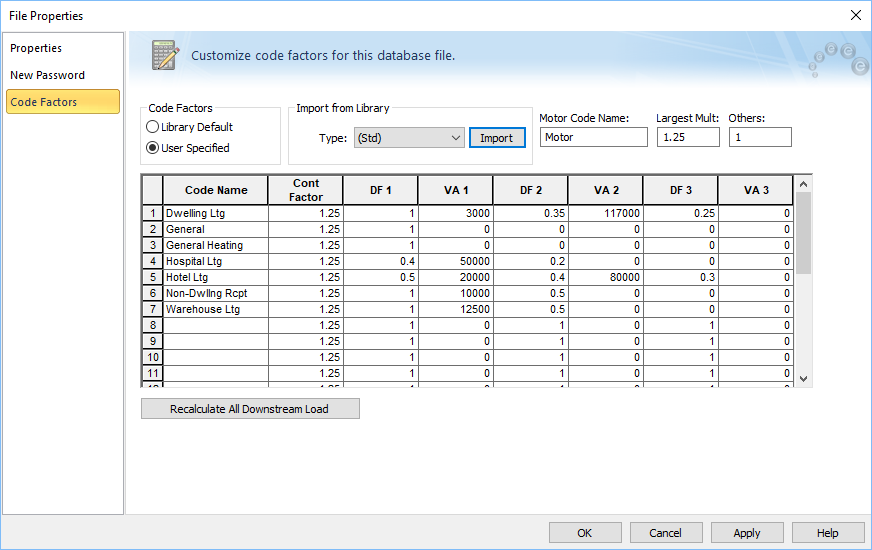Importing Load Units and Demand Factors
Load Unit
The EasyPower default load data unit is in MW and MVARs. In Revit, the load is typically stored in VA. When a load is imported to EasyPower, the load unit is set to kVA @ PF (power factor) even if the default load unit is something different.
To keep the two in sync, you may want to set your load unit to kVA @ PF in EasyPower. This can be changed in the equipment defaults.

Figure 1: Default Load Data
When the load is mapped from Revit to EasyPower, it is converted from VA to kVA.
If the power factor is defined in Revit, then it is mapped to the power factor in EasyPower. If there is no power factor defined in Revit, the power factor is set to 1.
Demand Factor
Typically, EasyPower uses the equipment default for the demand factor during import from Revit. If no equipment default is set in EasyPower, then the demand factor is set to 1.
Note that if you have set up a demand factor parameter in Revit, you can map that parameter to the EasyPower demand factor instead of using the equipment default or 1.
Note: Demand factor in Revit has a different meaning from the demand factor in EasyPower. See Code Factor below.
Code Factor
Code factor is a term specific to EasyPower that is more closely associated with Revit's Demand Factor. Any load in the Revit family can be assigned a Load Classification, which includes a demand factor Name and load Calculation method.

Figure 2: Load Classifications (in Revit)

Figure 3: Demand Factor and Calculation Method (in Revit)
In EasyPower, we can choose the code factor names from a list. These need to be first specified in either the Demand Load section of device library or in the File Properties.

Figure 4: Library Code Demand Factors

Figure 5: Code Factors in File Properties
Note: Not all demand load calculation types in Revit are supported in EasyPower.
More Information
| Importing from Revit to EasyPower |
